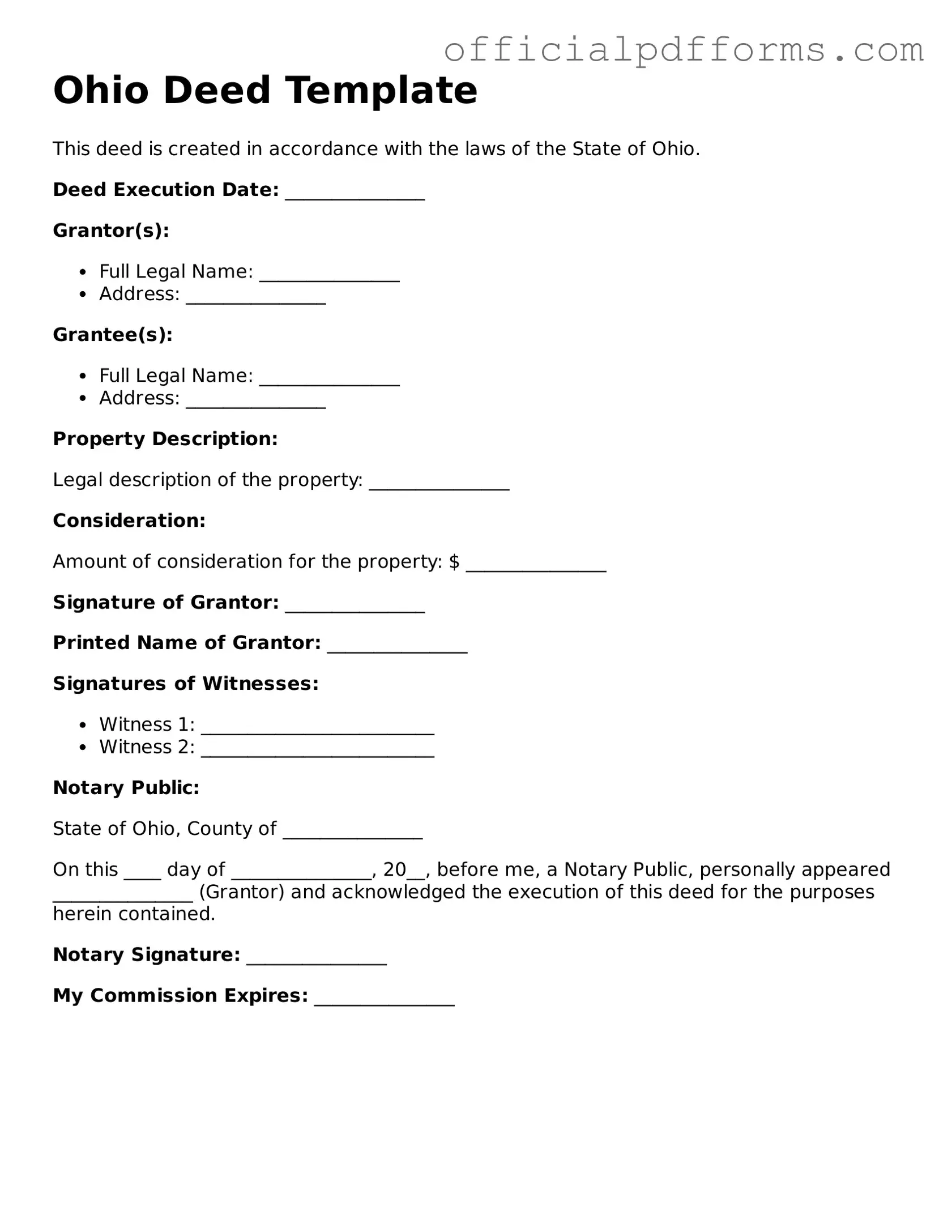An Ohio Deed form is a legal document used to transfer ownership of real property from one party to another in the state of Ohio. It outlines the details of the transaction, including the names of the parties involved, a description of the property, and any conditions of the transfer.
What types of deeds are available in Ohio?
Ohio recognizes several types of deeds, including:
-
Warranty Deed:
Provides the highest level of protection to the buyer, guaranteeing that the seller holds clear title to the property.
-
Quitclaim Deed:
Transfers whatever interest the seller has in the property without any guarantees about the title.
-
Special Warranty Deed:
Similar to a warranty deed, but only guarantees the title against defects that occurred during the seller's ownership.
To fill out an Ohio Deed form, follow these steps:
-
Provide the names and addresses of the grantor (seller) and grantee (buyer).
-
Include a legal description of the property being transferred.
-
State the consideration (price) for the transfer.
-
Sign the deed in front of a notary public.
Do I need to have the deed notarized?
Yes, in Ohio, a deed must be signed in front of a notary public to be legally valid. The notary will verify the identities of the parties involved and witness the signing of the document.
You should file the completed deed with the county recorder’s office in the county where the property is located. This ensures that the transfer is officially recorded and becomes part of the public record.
Is there a fee to file the deed?
Yes, there is typically a fee to file a deed in Ohio. The fee varies by county, so it’s best to check with your local county recorder’s office for specific amounts.
What happens if I don’t file the deed?
If you don’t file the deed, the transfer of ownership may not be recognized legally. This can lead to issues with property rights and future transactions, as the public record will not reflect the change in ownership.
While you can create your own deed form, it’s recommended to use a standard form or consult with a legal professional. This helps ensure that all necessary information is included and that the document complies with Ohio laws.
What is the purpose of a deed?
The primary purpose of a deed is to provide a clear record of ownership and the terms of the property transfer. It protects the rights of the buyer and seller, ensuring that the transaction is legally binding.
Can a deed be challenged after it’s filed?
Yes, a deed can be challenged in certain circumstances, such as if there was fraud, coercion, or if the grantor lacked the legal capacity to sign the deed. Legal action may be necessary to resolve disputes over ownership.
